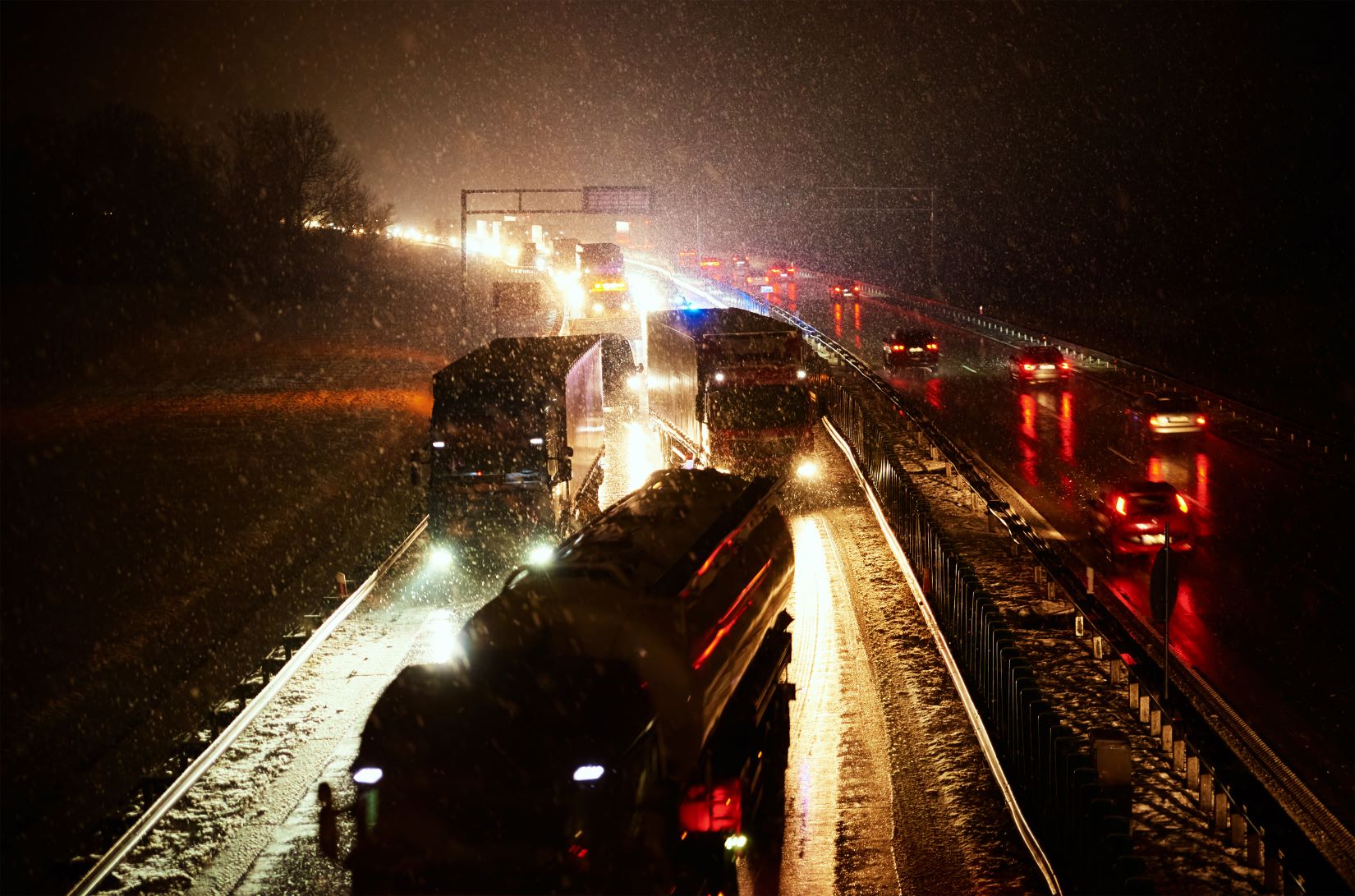Winter Weather Safety
As we head into freeze season, it is important to take necessary precautions and stay informed about weather conditions for a safe and smooth driving experience on North Texas roads.
IEA and TxDOT’s joint efforts aim to minimize risks and ensure winter weather safety for the traveling public on North Texas roads.
What Happens to Roads in Winter
North Texas experiences a wide range of winter weather conditions, from freezing rain and sleet to occasional snowfall. The conditions pose many challenges for drivers, such as slippery roads that compromise vehicle traction and control, and decreased visibility.
Freezing temperatures can cause concrete and asphalt to expand and contract, resulting in cracks and potholes. Bridges are especially susceptible to freezing temperatures due to their elevation and exposure to cold air. We often see “Bridge May Ice in Cold Weather” signs, warning of ice on bridges during cold weather. These signs remind drivers to be cautious when crossing bridges in freezing conditions.
Tools Used to Winterize Roads
One key aspect of winterizing roads is the use of sand and brine. TxDOT employs these materials as effective tools to combat winter weather:
- Brine, a saltwater solution, is applied to the road surface before a winter storm to prevent the formation of ice as a pretreatment.
- Sand is spread on icy roads to enhance traction, and IEA’s trucks have been instrumental in performing follow-up operations. (https://www.txdot.gov/about/newsroom/stories/txdot-prepares-for-winter-weather.html)
Through IEA and TxDOT’s efforts, we not only keep the roadways open and accessible but also contribute to the efficient movement of people and goods, even in challenging winter conditions.
IEA’s Commitment to Safety During Inclement Weather
“We made a commitment to TxDOT that we’d be around to help, so as we watch the weather reports we have the contractor on standby,” said Michael Speicher, IEA Construction Superintendent on the IH 35 Reconstruction in Gainesville for TxDOT Wichita Falls District.
During this project, truck traffic near the Oklahoma border received special attention, as motor-graders tirelessly cleared the way. IEA used trucks as “crash cushions” equipped with flashing lights to slow vehicles down and barrier walls stand as a guardian along the corridor, ready to be removed swiftly to allow crucial access to emergency vehicles. Additionally, Speicher’s team provided operated loaders to fill dump trucks with sand.
Over his 21 years of experience working on North Texas highways, Speicher recalls a particularly fierce winter weather event while working for TxDOT Fort Worth District where miles of traffic had come to a standstill. “We had semis parked for miles before we started clearing the road. […] Emergency vehicles couldn’t make it to anybody. It’s really important to keep the roadway clear,” he said, emphasizing the significance of ensuring the continuous flow of commerce and emergency services.
Ways The Public Can Remain Safe
While proactive measures are taken to make driving the roads safe, the most important tip Michael Speicher gives for staying safe during winter weather events is: IF YOU DON’T HAVE TO DRIVE, DON’T DO IT.
If driving is necessary, drivers should maintain their vehicles, drive cautiously by accelerating slowly, increase following distance, and approach bridges and ramps with caution. Lastly, it is important to always be prepared for emergencies and if you get stuck, do not get out of the car. (https://ftp.txdot.gov/pub/txdot-info/safety/winter_faq.pdf)
“If you’re stuck, there are hotlines to call. There’s TxDOT and NTTA, call them, stay in the car, and have a kit. Have some snacks, water, and a wool blanket if your car runs out of gas,” recommends Speicher.

